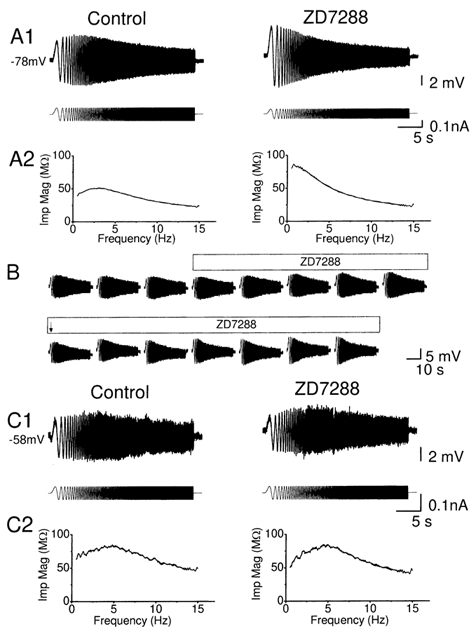Figure 7. ZD7288 blocked θ-resonance at hyperpolarized but not at depolarized membrane potential.

A1 and C1, typical voltage response (upper traces) evoked from hyperpolarized (-78 mV, in A1) and depolarized (-58 mV, in C1) membrane potentials by injecting a ZAP current (lower traces), before and after application of 10 μm ZD7288. The resonance at hyperpolarized level (-78 mV) was blocked by ZD7288 (n = 7, P = 0.004, Q = 1.12 ± 0.03 and 1.00 ± 0.00 before and after application of ZD7288), while the resonance at the at depolarized level (-58 mV) was resistant to ZD7288 (n = 4, P = 0.36, Q = 1.19 ± 0.08 and 1.29 ± 0.17 before and after application of ZD7288). A2 and C2, the impedance magnitude, calculated from the data in A1 and C1, is plotted against input frequency before and after ZD7288 application. B, typical time course of blockade of resonance, evoked from a hyperpolarized level. The steady state DC current had to be adjusted before and after ZD7288, due to the hyperpolarization caused by ZD7288. The peak-to-peak amplitude of ZAP current was reduced after ZD7288, at the time marked with an arrow.
